The History of Our Partnership
THE HISTORY OF THE NDONYO WASIN-PACKER PARTNERSHIP
The history of Packer’s connection to the Ndonyo Wasin Primary School in Kenya began in the fall of 2007. Rob Cousins, the former assistant head of Packer’s L/S, and a group of teachers were charged with the task of restructuring the Pre and Lower School Service Learning Program—the outcome was global and local. The Lower School would find community service organizations locally based here in New York and internationally. While it was easy to find local community service opportunities, Mr. Cousins and his team of teachers found it more difficult to find an international cause to support that made sense for the young children of the Lower School. Then, through a connection with a Packer family, Mr. Cousins learned about Jane Newman’s Thorn Tree Project and SENET (Sereolipi Nomadic Education Trust) that helps Ndonyo Wasin Primary School and two other primary schools along with fourteen preschools in the Samburu region of Kenya. What appealed to Lower School teachers most, of course, was that it was an organization that supports children and schools. Community service learning is most effective when the children feel connected to what they are doing. It makes sense for the young children at Packer, as students themselves, to work together to support the children of Ndonyo Wasin, with whom they have much in common.
The Ndonyo Wasin Primary School is located in the Samburu region of northern Kenya. The word Samburu means many things. It is the name of a district in Kenya (which is like a state in the US), but it is also the name of the group of people who live there and the language that they speak! All the children who go to Ndonyo Wasin Primary School are Samburu. Traditionally, the Samburu are nomadic herdsmen who move from place to place so their livestock (usually goats, camels, and cows) can find grass and plants to eat. Because most Samburu still live this way and move frequently, the students of Ndonyo Wasin live at school. The children spend three months of the year at home with their families and go to school at Ndonyo Wasin for the rest of the year.
Packer’s first initiative connected to Ndonyo Wasin was a philanthropic one. During the spring of 2008, Packer’s Lower School participated in an exercise-based fundraising effort called “Run the World” to support Ndonyo Wasin and the Thorn Tree Project. Because walking is a big part of all Samburu people’s lives, but especially students at Ndonyo Wasin who may walk as many as 30-40 kilometers at the end of each term to reach their families, an idea developed to create a division-wide event in which the students “walked” to Kenya by calculating how many hours of exercise they did and translating this into miles. Each hour of exercise symbolically represented approximately five miles and children were invited to seek sponsorship from families and friends of $1 per mile. Tallying these hours up weekly over the course of a four-week period, the fourth graders charted the Lower School’s progress on its route to Ndonyo Wasin from Brooklyn. As a culminating activity, the entire Lower School symbolically walked the last mile together in Prospect Park and celebrated their feat with a picnic and field day. This effort ultimately raised $20,000 and sponsored the creation of two new classrooms.
In March 2009, Packer art teachers Liz Titone and Elizabeth Eagle, along with Rob Cousins, went to Ndonyo Wasin Primary School. The two art teachers extended a very special portrait exchange project started by Ms. Eagle with Packer’s third and fourth grade students. With the help of Jane Newman, SENET’s founder, who provided photographs of individual Ndonyo Wasin Standard 3 students, Ms. Titone and Ms. Eagle paired Packer 3rd graders with Ndonyo Wasin students. Using watercolor paint, each Packer participant drew a portrait of their Ndonyo Wasin “portrait pal” in the winter of 2009 prior to their trip at Spring Break. Bringing these portraits with them and individual photographs of Packer’s 3rd grade students, the two art teachers led a variation on this project with the Standard 3 students at Ndonyo Wasin. While art is not a regular part of the Ndonyo Wasin curriculum, the Standard 3 children happily connected with the project (and their art teachers) and drew phenomenal corresponding portraits of their “portrait pals” to send back to Packer.
In addition to the portrait exchange, it was on this trip that the pen pal program was launched between the 3rd and 4th graders at Packer and Standards 3 and 4 at Ndonyo Wasin. Packer students were paired with Ndonyo Wasin students to whom they wrote letters telling about their lives in New York, included some drawings and/or photographs, and asked questions about what it is like to live in Kenya. Mr. Cousins brought these letters to the students at Ndonyo Wasin and helped them craft their replies. Since then, we have had five successful exchanges of letters. The pen pal program continues to enrich and personalize Packer’s students’ relationships with our partner school, Ndonyo Wasin.
Later, in July of 2009, Rob Cousins returned to Ndonyo Wasin. While there, he met and collaborated with the teachers of Ndonyo Wasin, observed their teaching and did some teaching of his own as well. Working with a small collection of Standard 4 students, he co-created two books to help provide Packer students with a better sense of what life is like for Ndonyo Wasin students and life in general for the Samburu. Longuru Lives in Ndonyo Wasin, a photo-essay on life in the village of Ndonyo Wasin, tells the story of a young boy who attends Ndonyo Wasin Primary School and what his daily life in the village is like. J is for Jumping is a Ndonyo Wasin alphabet book photographed and organized by the students to show the most important parts of Ndonyo Wasin to the young students of Packer. Students from Packer and Ndonyo Wasin alike have taken pleasure in leafing through the pages of these books, becoming familiar with a different part of the world or delighting in seeing their world captured in book form.
In Spring 2010, Packer’s Lower School completed another walk-a-thon fundraising event in Prospect Park to echo the walks the children of Ndonyo Wasin make at the beginning and end of each term. This time, instead of the Run the World Project, students completed walks of different lengths, depending on their grade level: third and fourth graders walk 4-5 miles, second graders 2.5 miles, and kindergarten and first graders walking 1 mile. With the sponsorship of family and friends, Packer students raised $25,000 for Ndonyo Wasin. This money was used to hire eleven new teachers.
In June 2010, Packer Lower School educators Andrea Kelly, Rob Cousins and Rains Paden traveled to Ndonyo Wasin Primary School to get to know the students and teachers. While there, they linked the two administrative teams—Andrea Kelly, Packer’s Lower School Head, and Paul Lepartingat, Ndonyo Wasin’s Head Teacher (in 2010)—sharing ideas, acknowledging similar joy, successes and challenges as school leaders and brainstorming ways they both deal with the responsibilities of being an administrator. All three Packer teachers worked with students, supporting existing lessons that Ndonyo Wasin teachers were leading. Additionally, Rains Paden and Rob Cousins (Ms. Rains and Mr. Rob to the students) worked with small groups of students on projects like creating like a counting book in Samburu, Swahili and English for Packer students and creating a photo/video project about the daily lives of Ndonyo Wasin students for Packer’s students.
Packer teachers also provided professional development for Ndonyo Wasin’s faculty and conducted a workshop on teaching strategies to support the needs of the students in preparation for their exams while also enhancing their English reading comprehension. Responding to feedback from Ndonyo Wasin teachers, the Packer teachers led a workshop on time-on-task teaching practices that included the whole class rather than just one student at the blackboard. They modeled ‘read-alouds’ and small group guided reading work. Finally, Ms. Paden and Mrs. Kelly worked together while at Ndonyo Wasin to create curricular connections for Packer students to Ndonyo Wasin Primary School, Samburu life in general, and the experiences of the students at the school in particular.
In fall of 2010, two more books co-written and photographed by Ndonyo Wasin students and Rains Paden were published and shared between the two schools. A Day in the Life of A Ndonyo Wasin Student tells the story of what life at school is like in general and what being at Ndonyo Wasin entails in particular. Three Painted Hills is a counting book in the three languages the students that Ndonyo Wasin learn and speak while in school. The meaning of the words Ndonyo Wasin is “three painted hills” for the black, red and white colors (determined by their mineral content) of the three hills above the village and school. Lower School classrooms have enjoyed reading the books aloud as a whole group as well as holding onto them for individual enjoyment during free-reading time. Jane Newman reports that the children at Ndonyo Wasin particularly enjoy seeing themselves in the pages of the book and reading words in both Samburu and Swahili.
During spring of 2011, the chief of the Samburu and three Samburu warriors came to visit Brooklyn and Packer as ambassadors of Ndonyo Wasin and the Thorn Tree Schools. Chief George, the elected representative of the Samburu region in the Kenyan government and the chief of the Samburu people, traveled from Seriolipi to New York along with three traditional morani or warriors, Lecit, Katelo, and Lekarato. Dressed in traditional and everyday Samburu clothing of brightly colored wraps, colorful beaded necklaces, bracelets, headdresses and anklets, and armed with the spears and rungu (wooden clubs) that warriors use to protect the community and their animals, these four visitors delighted the Packer community over the course of the two days they spent at our school. The Samburu visitors displayed their traditional chanting and singing, demonstrated their dancing and jumping skills (a sign of athletic and physical prowess among the morani) and visited each grade level (with an assembly and Q & A session for Lower School students). Two first grade classes got hands-on instruction on jumping from the Samburu warriors when the four accompanied them to their dance class. Additionally, the ninth grade partook in a Chapel and moderated discussion with Chief George about the history of the Samburu and the challenges they face as a nomadic culture in the 21st century. In all, it was a phenomenal visit, though all too short. It is the intention of the leaders at Packer, Ndonyo Wasin and SENET to get Paul Lepartingat, (Head Teacher at Ndonyo Wasin Primary School), teachers and graduates of Ndonyo Wasin to come visit Packer in the years to come to share their experiences as they contribute to positive change and the long-term success and survival of the Samburu.
In the years to come, Packer’s Lower School will continue its commitment to Ndonyo Wasin as its partner in Kenya. We will spearhead a fundraising effort every other year and will strengthen the connections between the students at both schools through shared projects and pen pal writing. Teachers from Packer hope to continue to visit Ndonyo Wasin to share student work, collaborate with Ndonyo Wasin faculty, and provide any other professional support they can to the dedicated teachers of Ndonyo Wasin. We look forward to the day when more members from Ndonyo Wasin come to New York, so we can share our hospitality and teaching practices and nurture the rich partnership that connects our two communities.
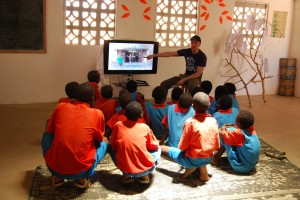
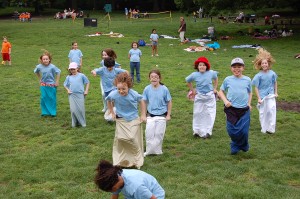
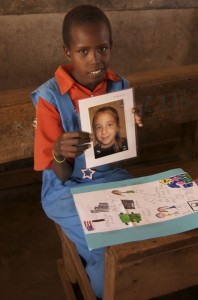
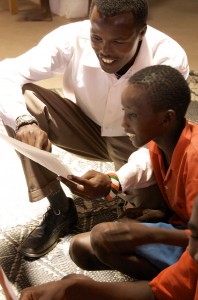
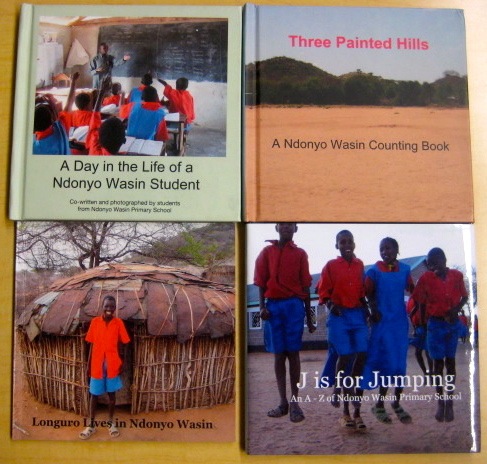
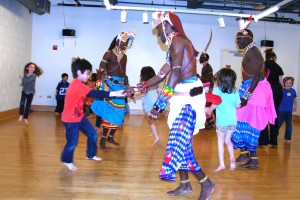


Leave a Reply
You must be logged in to post a comment.